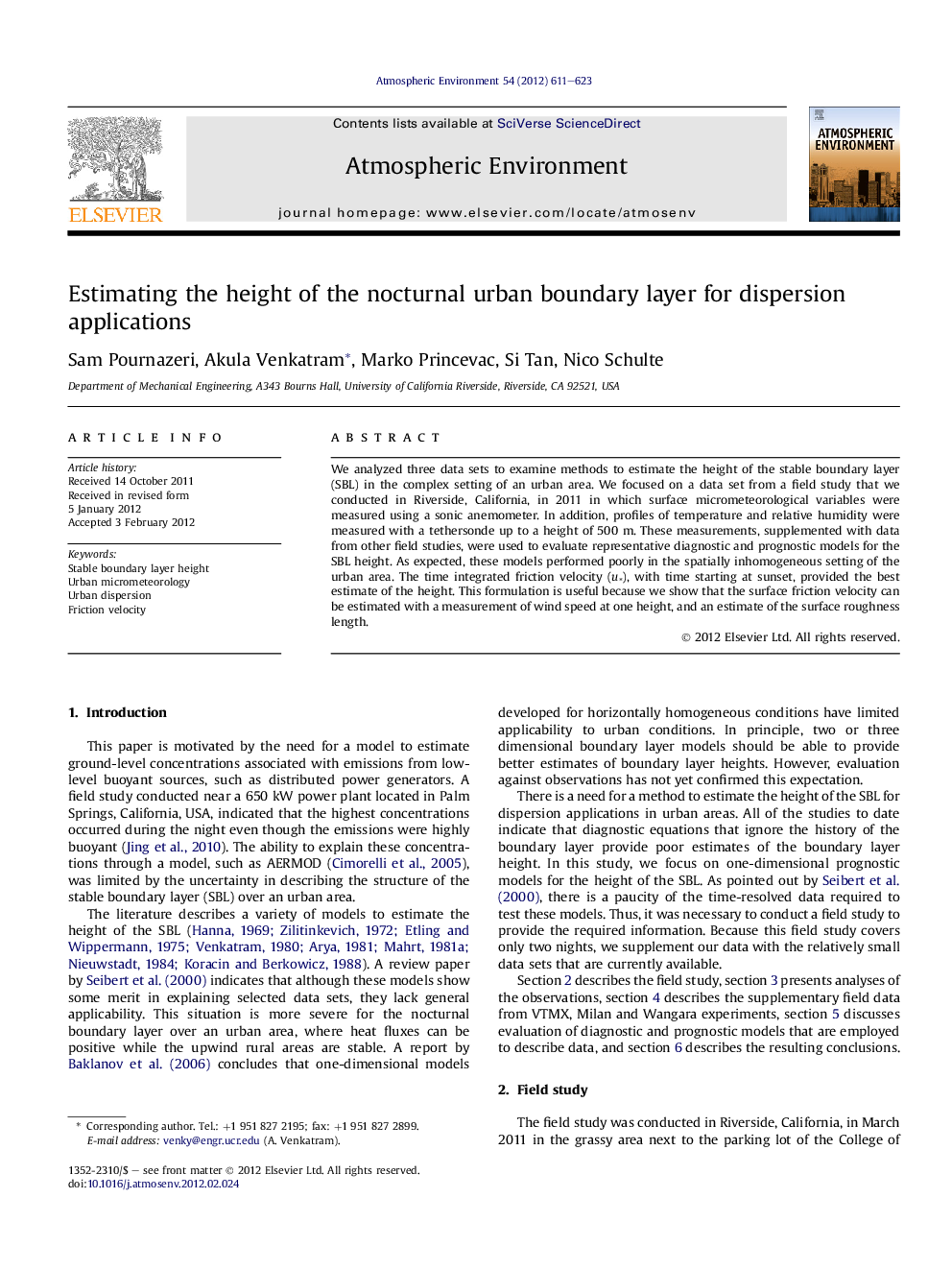| Article ID | Journal | Published Year | Pages | File Type |
|---|---|---|---|---|
| 4438834 | Atmospheric Environment | 2012 | 13 Pages |
We analyzed three data sets to examine methods to estimate the height of the stable boundary layer (SBL) in the complex setting of an urban area. We focused on a data set from a field study that we conducted in Riverside, California, in 2011 in which surface micrometeorological variables were measured using a sonic anemometer. In addition, profiles of temperature and relative humidity were measured with a tethersonde up to a height of 500 m. These measurements, supplemented with data from other field studies, were used to evaluate representative diagnostic and prognostic models for the SBL height. As expected, these models performed poorly in the spatially inhomogeneous setting of the urban area. The time integrated friction velocity (u*), with time starting at sunset, provided the best estimate of the height. This formulation is useful because we show that the surface friction velocity can be estimated with a measurement of wind speed at one height, and an estimate of the surface roughness length.
► Structure of the urban nocturnal boundary layer was investigated through a field study. ► Different models for the stable boundary layer heights (SBL) were evaluated. ► These models performed poorly in the spatially inhomogeneous setting of the urban area. ► Observed SBL heights, correlated well with the time integral of friction velocity. ► Surface friction velocity can be estimated using the measured wind speed at one level.
